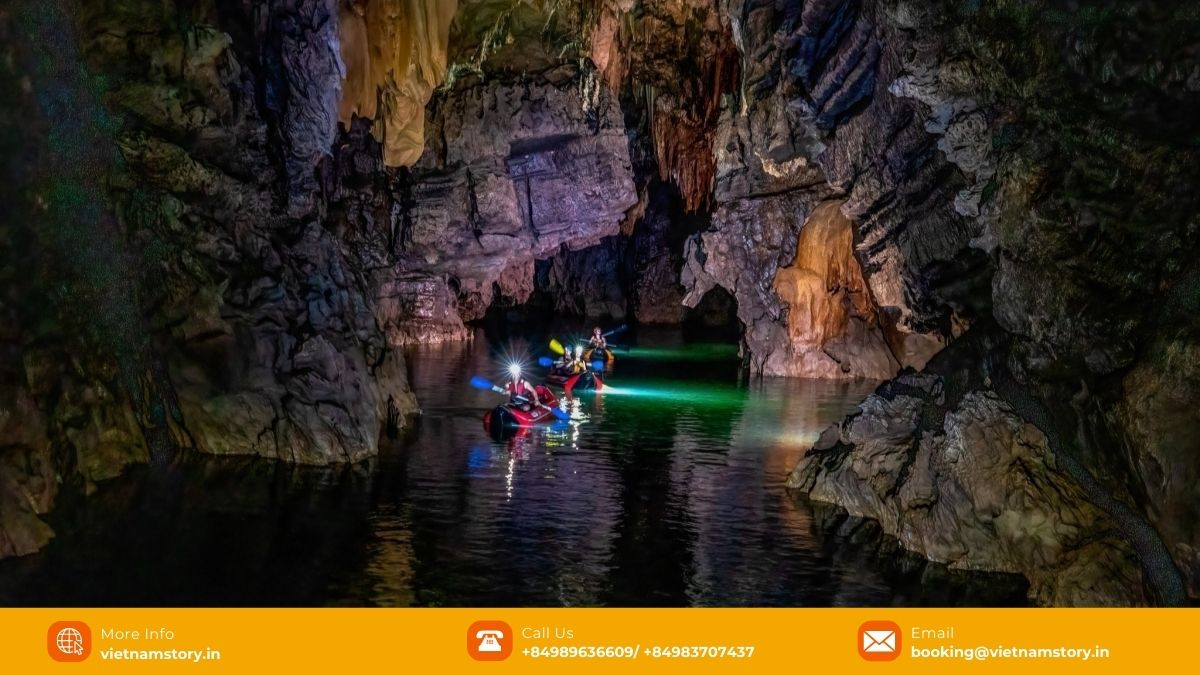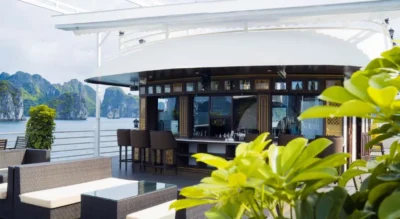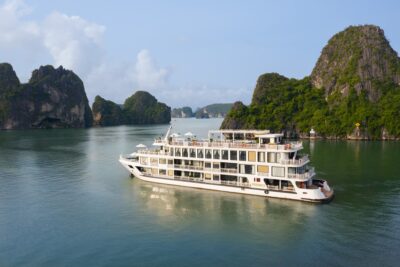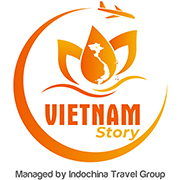Vietnam, a land celebrated by Indian travellers for its breathtaking landscapes and rich cultural heritage, harbours a hidden world beneath its surface: a realm of magnificent caves in Vietnam. From colossal caverns holding entire ecosystems to intricate grottoes echoing with ancient history, these subterranean marvels offer a captivating journey into the Earth’s heart. More than just natural beauty, these Vietnam caves possess significant geological, ecological, and cultural value, promising unique and unforgettable adventure tourism experiences, especially for nature lovers from India seeking thrills beyond the ordinary.
This guide delves into the fascinating world of caves in Vietnam, exploring their unique limestone formations, diverse ecosystems, and providing practical information tailored for Indian tourists planning their Vietnam tour packages to discover these incredible natural wonders.

A Subterranean Wonderland: Vietnam’s Diverse Karst Landscapes and Cave Systems
Vietnam’s dynamic geological history, particularly its extensive karst landscapes formed over millions of years, has sculpted a stunning array of caves in Vietnam. These range from intimate grottoes to some of the planet’s largest and most awe-inspiring cave systems, particularly concentrated in areas like Quang Binh Province and Ha Long Bay. These caves, carved by time and water, offer more than just adventure; they provide a profound glimpse into Earth’s hidden beauty and its geological past. Exploring these underground realms is a journey through time, witnessing the power of natural forces in creating features like towering stalactites and stalagmites and vast chambers.
READ MORE: Unveiling diversity of waterfalls in Vietnam
Top Caves In Vietnam That Every Nature Lover Must Visit
While Vietnam boasts hundreds of caves, several stand out for their sheer scale, unique beauty, and accessibility. Here are some of the most renowned caves in Vietnam to consider for your itinerary:
1. Son Doong Cave (Quang Binh): A Colossus of the Earth – The World’s Largest Cave
- Location: Phong Nha-Ke Bang National Park, Bo Trach District, Quang Binh Province.
- Significance: Officially recognized as the World’s Largest Cave. A truly colossal subterranean kingdom.
- Key Features: Possesses its own unique ecosystem, including an internal rainforest/jungle, an underground river, unique climate, towering stalactites, and giant stalagmites (cave pearls). Features impressive dolines (skylights).
- Experience: Multi-day expedition involving challenging trekking, river crossings, climbing, and navigating difficult terrain.
- Difficulty Level: Challenging. Requires significant fitness preparation and trekking training courses.
- Cost: Approximately 3,000 USD/person (Approx. INR 2,49,000). Tours are exclusive and book out far in advance.
- Tour Operator: Exclusively operated by Oxalis Adventure. Booking at least 1 year in advance is highly recommended.
- Best Time to Visit: Dry season, from January to the end of August. Closed during the rainy season due to flood risks.
- Caution: Age limit (18-70), requires high fitness level, potential for unexpected accidents (floods, insect/snake bites).

Exploring Son Doong is the pinnacle of cave exploration in Vietnam, an opportunity to witness nature’s raw power on an unparalleled scale. It’s a transformative journey into a world hidden beneath the surface.
2. Phong Nha Cave (Quang Binh): Journey Along an Underground River
- Location: Phong Nha-Ke Bang National Park, Bo Trach District, Quang Binh Province.
- Significance: Part of a UNESCO World Natural Heritage site, renowned as the longest river cave in Vietnam.
- Key Features: Explored primarily by boat along a stunning underground river. Features vast dry chambers, impressive stalactites and stalagmites, clean waters, and unique rock formations resembling natural sculptures.
- Experience: Scenic boat ride along the Son River into the cave entrance, followed by exploration of the illuminated chambers.
- Difficulty Level: Moderate. Accessible for most visitors.
- Cost: Approximately 6 – 30 USD/person (Approx. INR 500 – 2,500).
- Best Time to Visit: Dry season, from February/March to August for easier access and manageable water levels.
- Caution: Riding in darkness, potential for bad weather, floods, or landslides during the rainy season.

Gliding through Phong Nha Cave offers a serene yet dramatic encounter with the subterranean beauty of the Phong Nha-Ke Bang National Park.
3. Paradise Cave (Hang Thien Duong – Quang Binh): A Heavenly Display of Natural Art
- Location: Phong Nha-Ke Bang National Park, Bo Trach District, Quang Binh Province.
- Significance: Known as the longest dry cave in Asia, often called an “underground palace”.
- Key Features: Exquisite chambers filled with stunning displays of intricate stalactites and stalagmites resembling curtains, columns, and terraces. Features well-lit pathways.
- Experience: Accessible exploration via well-maintained wooden boardwalks and stairs through the first kilometer. Kayak tours available for deeper exploration of underground streams.
- Difficulty Level: Moderate (initial section easy, deeper exploration more challenging).
- Cost: Approximately 5 – 24 USD/person (Approx. INR 400 – 2,000). Kayak tours cost extra.
- Best Time to Visit: Dry season, from February/April to late August for optimal conditions.
- Caution: Low-lighting areas off the main path, potential for unexpected weather, climbing activities involved. No littering or vandalism. Joining guided tours recommended for deeper exploration.

4. Mua Cave (Hang Mua – Ninh Binh): Panoramic Views from a Mountain Summit
- Location: Ninh Xuan commune, Hoa Lu district, Ninh Binh Province.
- Significance: Famous for the stunning panoramic viewpoint at the mountain peak rather than the cave itself.
- Key Features: The cave is small; the main attraction is climbing ~500 stone steps to the summit of Ngoa Long Mountain for breathtaking views of Tam Coc’s karst landscape, Ngo Dong River, and rice paddies. Features small worship sites along the ascent.
- Experience: A rewarding physical challenge (climbing the steps) combined with incredible scenic photography opportunities.
- Difficulty Level: Easy (cave), Moderate (climb).
- Cost: Approximately 5 – 10 USD/person (Approx. INR 400 – 800). Boat-renting fees for Tam Coc are separate.
- Best Time to Visit: Dry season, November to April for comfortable climbing and best visibility, especially during rice seasons (May-June or Sept-Oct for green/golden fields). Visiting early morning is ideal to avoid crowds.
- Caution: Steps can be steep and slippery, especially after rain. Hiking activity requires reasonable fitness.

5. Dau Go Cave (Wooden Stakes Cave – Ha Long Bay): A Historical Gem
- Location: Dau Go Island, Ha Long Bay, Quang Ninh Province.
- Significance: One of the most famous and historically significant caves in Ha Long Bay. Linked to the 13th-century battle against Mongol invaders led by General Tran Hung Dao.
- Key Features: Divided into 3 main compartments with distinct beauty. Features impressive stone columns, stalactites, stalagmites, and colourful artificial lighting enhancing the formations.
- Experience: Easily accessible via cruise boat tours. Walkways allow exploration of the main chambers.
- Difficulty Level: Easy. Suitable for most visitors.
- Cost: Usually included in Ha Long Bay cruise packages (Approx. 28-30 USD+ or INR 2,300+ depending on cruise).
- Best Time to Visit: Spring (March-May) and Fall (September-November/October-April) offer the best weather for Ha Long Bay cruises.
- Caution: Dim lighting areas, narrow passages, uneven terrain. Watch for slips or falls. Consider physical fitness for walking.

6. Sung Sot Cave (Surprise Cave – Ha Long Bay): Grandeur in the Bay
- Location: Bo Hon Island, Ha Long Bay, Quang Ninh Province.
- Significance: One of the largest and most beautiful caves in Ha Long Bay, covering ~10,000 sqm.
- Key Features: Consists of two main chambers: the “Waiting Room” and the “Serene Castle”. Features magnificent rock formations, stalactites, stalagmites, often illuminated with multi-coloured lights. Some formations resemble figures like Buddha or dragons.
- Experience: Reached via cruise. Involves climbing steps to the entrance and walking through the chambers on paved paths. Offers stunning views of the bay from certain points.
- Difficulty Level: Easy to Moderate (due to steps).
- Cost: Usually included in Ha Long Bay cruise itineraries (Approx. 12-21 USD+ or INR 2,500 – 4,200+ depending on cruise/ticket type).
- Best Time to Visit: Spring (March-May) and Fall (September-November/October-December) for pleasant weather.
- Caution: Relevant trekking/climbing activities (steps), potential for insect bites, variable weather (rain, heat, cold).
Sung Sot Cave lives up to its name (“Surprise”), revealing vast, beautifully adorned chambers that are a highlight for many visitors exploring the caves in Vietnam‘s famed Ha Long Bay.
More Spectacular Caves in Vietnam to Discover
Beyond these famous examples, Vietnam’s diverse geology offers a wealth of other subterranean experiences for the adventurous Indian traveller:
- Tu Lan Cave System (Quang Binh): Near Phong Nha, offering challenging multi-day adventure tours (trekking, swimming through river caves) operated exclusively by Oxalis Adventure. Cost up to 242 USD (Approx. INR 16,600+). Requires fitness and advance booking (December to August).
- Hang En (En Cave – Quang Binh): The world’s third-largest cave, famous for its huge chambers and stunning beach campsite inside. Offers 2-day/1-night treks involving river crossings and forest trekking. Moderate difficulty. Cost approx. 6-25 USD / INR 27,000 (likely refers to tour cost). Best visited December to September. Offers a unique overnight camping inside experience.
- Luon Cave (Ha Long Bay): A smaller cave known for its arch-shaped entrance leading to a tranquil inner lake surrounded by cliffs. Accessed only by kayak or small boat (dinghy) due to low ceiling. Moderate difficulty. Cost varies widely with tour packages (32-300 USD / INR 120+ entry fee). Best visited April-June or September-April.
- Thien Cung Cave (Heavenly Palace Cave – Ha Long Bay): Near Dau Go, known for magnificent stalactites/stalagmites resembling mythical figures, enhanced by colourful lighting. Easy access, usually included in Ha Long Bay cruises. Best visited March-May & Sept-Nov.
- Nguom Ngao Cave (Cao Bang): A large, beautiful cave in Northeast Vietnam near Ban Gioc Waterfall. Features towering stalactites and illuminated chambers. Less crowded. Easy difficulty. Low entry fee (Approx. INR 150). Best visited February-August.
- Hang Va Cave (Quang Binh): Known for its unique conical calcite formations (tower cones). Requires a more adventurous tour involving swimming and rappelling/climbing. Challenging difficulty. Cost approx. INR 16,600 (likely tour cost). Best visited February-August.
- Trung Trang Cave (Cat Ba Island, near Ha Long Bay): Offers a mix of natural beauty and history (evidence of ancient civilizations). Home to diverse flora/fauna including bats. Moderate difficulty. Low entry fee (Approx. INR 150). Best visited February-August.
- Tam Coc Caves (Ninh Binh): A series of three caves (Hang Ca, Hang Hai, Hang Ba) explored via a scenic boat trip on the Ngo Dong River through rice paddies and karst formations. Easy difficulty. Cost part of the Tam Coc boat tour fee. Best visited November-April.
Cave Exploration in Vietnam: Safety, Responsibility, and Tips for Indian Tourists

Exploring the magnificent caves in Vietnam is a thrilling adventure, but prioritizing safety and environmental responsibility is crucial. Here are some essential tips, especially for visitors from India:
- Choose Reputable Guided Tours: Always opt for licensed and well-regarded tour operators like Oxalis Adventure for challenging caves (Son Doong, Tu Lan, Hang Va) or established providers for Phong Nha, Paradise, and Ha Long Bay caves. This ensures proper equipment, knowledgeable guides, and adherence to safety protocols.
- Assess Difficulty & Fitness: Be realistic about your physical condition. Caves range from Easy (paved paths like Sung Sot, Paradise main section) to Moderate (boat trips, some climbing like Phong Nha, En Cave) to Challenging (multi-day treks, swimming, technical skills like Son Doong, Tu Lan). Check the required fitness level before booking.
- Appropriate Gear: Wear comfortable clothing suitable for humidity and potential wetness. Sturdy walking shoes or trekking boots with good grip are essential for uneven and potentially slippery terrain. Quick-dry clothing is beneficial for river caves.
- Safety Precautions: Listen carefully to your guide’s instructions. Be aware of potential hazards: slippery surfaces, uneven ground, low ceilings, darkness (carry a headlamp for adventure tours), potential flooding (especially during rainy seasons – check forecasts), insect bites (use repellent), and wildlife encounters (snakes – rare but possible).
- Booking & Timing: High-demand caves like Son Doong and Tu Lan require booking many months, even a year, in advance. Check the best time to visit for each cave/region to avoid rainy seasons and ensure optimal conditions.
- Pack Essentials: Carry sufficient water, snacks (especially for longer tours), sunscreen, insect repellent, a basic first-aid kit, and perhaps a waterproof bag for electronics. For adventure tours, bring varied clothes for urgent situations as advised.
- Environmental Consciousness: Respect the fragile cave environment. Do not touch stalactites or stalagmites (oils from hands stunt growth). Stay on marked paths. Pack out all trash – no littering. Avoid making loud noises that disturb wildlife (like bats). Follow local regulations and guidelines.
- Costs: Factor in entrance fees or tour costs, which vary significantly. Budget accordingly – easier caves have low fees (a few hundred INR), while major expeditions cost thousands of USD (lakhs of INR).
Conclusion: Discover Vietnam’s Underground Treasures
The caves in Vietnam are truly natural wonders, offering Indian travellers a unique window into the Earth’s geological artistry and a playground for unforgettable adventures. From the world-record-breaking scale of Son Doong Cave in Quang Binh Province to the easily accessible beauty of caves in Ha Long Bay and the serene river journeys in Phong Nha-Ke Bang National Park, these subterranean marvels invite exploration.
Whether you seek the adrenaline rush of a challenging spelunking expedition, the tranquility of gliding on an underground river, or simply the awe-inspiring beauty of intricate limestone formations, the diverse caves of Vietnam promise lasting memories. By exploring responsibly, respecting the environment, and choosing appropriate tours, you contribute to the preservation of these fragile ecosystems for future generations.
Ready to embark on your own Vietnamese cave adventure? Explore our tailored Vietnam tour packages from India that include visits to some of these spectacular natural wonders.











